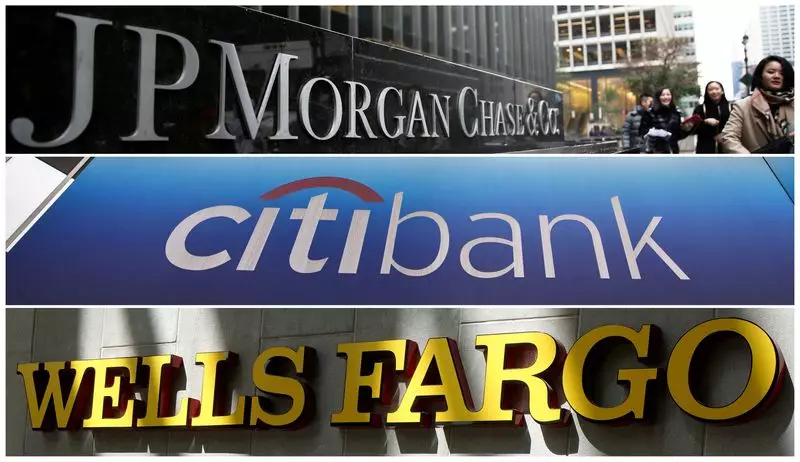Following the aftermath of the pandemic, Wall Street banks have reported a significant increase in deal flow and investment banking activity in their quarterly earnings reports. Major U.S. banks such as Citigroup, JPMorgan, and Wells Fargo have all witnessed a surge in investment banking revenue, signaling a healthier pipeline for deals in the market. Merger and acquisition volumes globally saw a significant increase of 20% from the previous year, reaching $1.6 trillion in the first half of the year. Similarly, equity capital market volumes also climbed by 10% during the same period.
Despite the positive outlook in investment banking activity, Wall Street banks have faced some headwinds and reasons for caution. While Citigroup reported a significant 60% jump in investment banking revenue to $853 million and JPMorgan saw a 50% increase in investment banking fees, Wells Fargo experienced a modest 38% surge to $430 million in investment banking revenue. However, Wells Fargo shares dropped by 6% due to missing analysts’ estimates for interest income, reflecting some investor concerns.
The market response to the quarterly earnings reports was mixed, with Citigroup shares down by 1.5% on worries regarding expenses and market share, while JPMorgan shares dropped by 0.3% amid concerns about costs and provisions. Citigroup’s CFO, Mark Mason, mentioned on a call after the earnings that the pipeline for announced deals was looking strong and expected to play out by the end of the year and into 2025. Factors such as the regulatory environment, upcoming elections, and evolving interest rates and inflation are crucial in shaping the outlook for investment banking activity.
As the U.S. approaches the November presidential election and the interest rate cycle remains uncertain, banks are cautiously optimistic about the future outlook for investment banking. JPMorgan’s CFO, Jeremy Barnum, highlighted that while dialogue on mergers and acquisitions was robust, actual deals remained muted. Initial public offerings were lower than expected, with equity market strength driven by a few stocks, while other key areas like mid-cap technology were more subdued. Despite challenges, banks like Wells Fargo have seen positive activity across various sectors such as investment grade desks, capital markets, and leverage finance business.
Analysts at credit rating agency Moody’s have predicted significant improvements in investment banking revenue sources for U.S. banks, particularly in debt issuance and mergers and acquisitions. While IPOs were slightly lower compared to the previous year, investment banks like Goldman Sachs and Morgan Stanley are expected to report strong quarterly results. Goldman Sachs is anticipated to see a significant increase in earnings compared to the same period in 2023, benefiting from a revival in deals and fewer writedowns in its consumer business. Morgan Stanley’s earnings per share are expected to rise by 33%, driven by the increased activity in mergers, acquisitions, and capital markets.
While Wall Street banks have seen a notable uptick in investment banking activity following the pandemic, uncertainties remain in the market. The future outlook will be influenced by various factors such as the regulatory environment, upcoming elections, interest rate cycles, and market trends. Despite challenges, the banking sector remains cautiously optimistic about the recovery and growth of investment banking activities.

